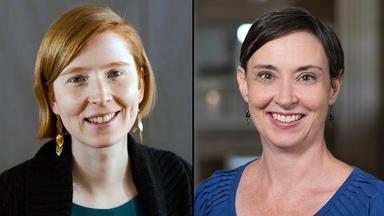By Eric Butterman
Adam Suomala (MPA ’15) has aging on his mind, and has for some time. But this isn’t him obsessed with thoughts of retirement. Instead, it’s his work.
Suomala is executive director of the Minnesota Leadership Council on Aging, a coalition of nonprofits formed in 2004.
The council represents 33 separate statewide organizations that work in the field of aging, including groups such as AARP, Catholic Charities, Metro Meals on Wheels, and the Minnesota Association of Area Agencies on Aging. The council’s intention is to give these groups a combined voice in helping shape the state’s aging strategy.
“As a nation, we are missing out on the value of those who are older,” Suomala says. “We are overall not giving elders the respect they deserve. That needs to come to a stop.”
‘A crucible moment’ at the Humphrey School
While Suomala today helps focus the work needed to elevate the state’s aging policies, he originally thought he’d pursue architecture as a career until he took a class at the Humphrey School of Public Affairs called Topics in Nonprofit Leadership Management. The course was taught by former Congressman Tim Penny. Suomala says it completely changed his career path.
“Jan Malcolm [the recently retired Minnesota Commissioner on Health] came in to speak one week,” he says. “She mentioned the state’s aging shift, and all that wasn’t in place to meet that need and how not enough people were paying attention to the issue. It was a crucible moment for me. I was driving home and thought, ‘I have to work in health and human services policy.’”
The University gave him a strong grasp on leadership training, statistics, and a phenomenal network of people to call on for advice, he adds. “I still talk every week with the people in my cohort [at the Humphrey School], and it truly built my own capacity to be a better leader.”
The challenge of serving an aging population
About one million people living in Minnesota are over the age of 65, a significant portion of the state’s roughly 5.7 million residents. That represents both a resource and an opportunity, Suomala says.
Strategically, the goal of the Council on Aging is to promote an “age-friendly Minnesota,” which means working to educate legislators and influence public policy decisions. The organization says it “seek[s] nothing short of deep transformation in how the individual leaders, organizations, and systems responsible for shaping Minnesota’s experience of aging work collaboratively to create change.”
A major part of the council’s work is to help stop ageism. “On a global level, it’s a pervasive form of discrimination,” Suomala says. “As Minnesotans work to champion diversity, equity, and inclusion, it is essential that anti-ageism efforts be integrated into our conversations.”
Another focus highlights the work done by caregivers and family members: Suomala notes the majority of elder care is still provided by families. “One of the unspoken challenges is that many people [and companies] are just starting to learn about the obligations that their workforce has to care for older adults,” he says.
“For example, a worker may say they have to move home to a rural community because there’s no one to give services to a loved one. Our society is used to talking about maternity leave or paternity leave, but what about leave to rush home because of a parent needing a knee replacement?” Suomala says. “A concerted effort is needed to help solve [those types of issues]. It’s about our bigger conversations with government organizations, our philanthropy partners, and more.”
Suomala says the Council is looking beyond the usual strategic lens when it plans for the future.
“Leaders often tend to think just three years ahead, but many changes will take longer and need more persistence,” he says. “Seventy percent of Minnesotans 65 and over will need long-term services and support, and there are presently 23,000 job openings [for caregivers] in the aging field.
“We didn’t prepare our state for the demographics of today. We aren’t prepared well enough for what’s ahead,” Suomala adds. “To prepare for the next 10 to 20 years we must do better. And we are.”
This story was originally published in Minnesota Alumni magazine.


